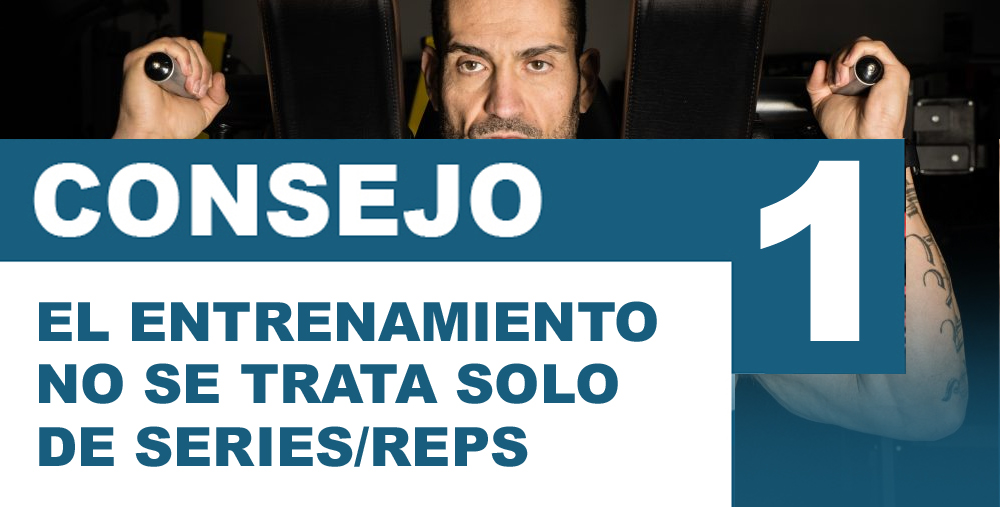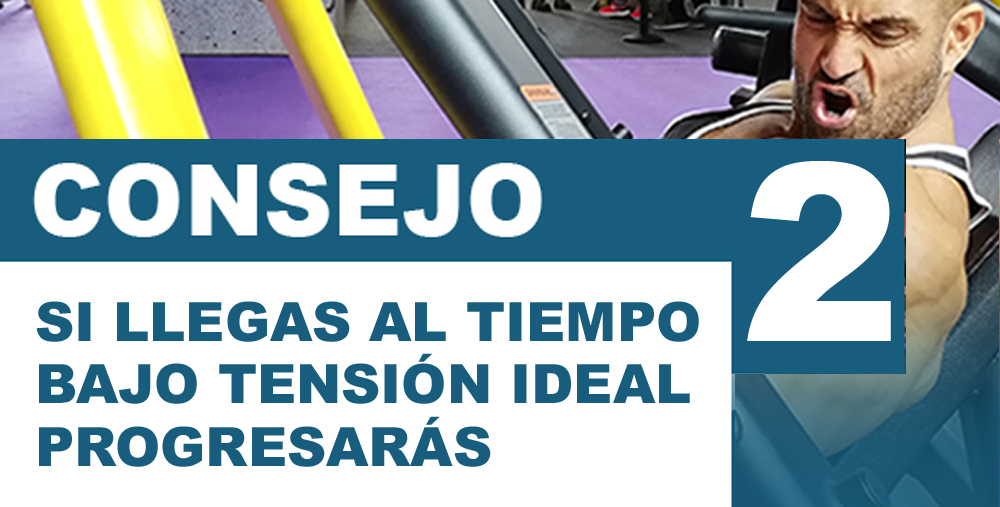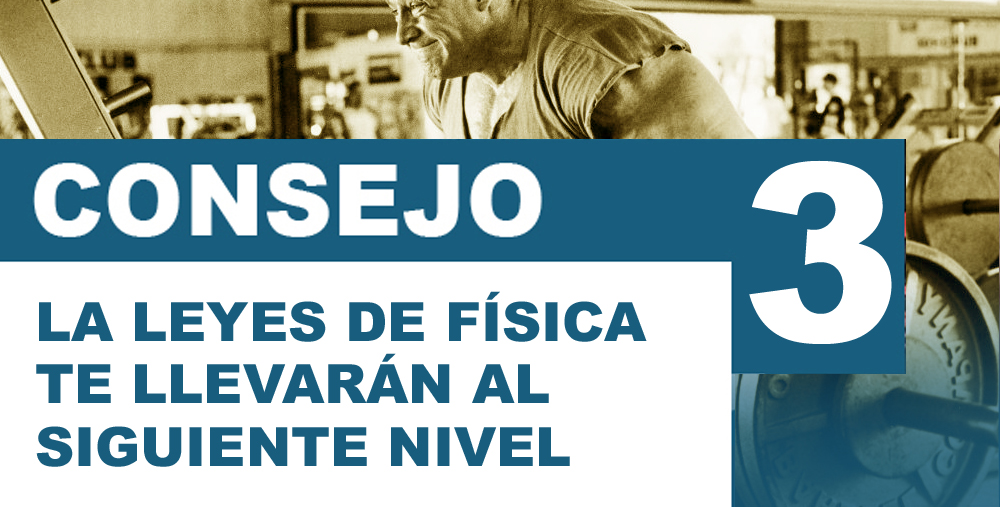Many like you have a clear concept that you have to do certain things to grow, define and progress, but you never think about why don’t you train correctly? .
To Raúl Carrasco, our best current IFBB Pro exponent (sponsored by Amix) there is a topic that he always loves, and that he talks about in his seminars. It is one of these topics that has been around forever and that can also help you discover why aren’t you training correctly? .
This has already been discussed, videos have been recorded and a lot will sound, but Raúl, like many of our experts, would like to repeat it because there is no other.
It is a bit of a serious mistake that is made in training, especially when performing a series, a series and a few repetitions.
Understanding: why aren’t you training correctly?
When you get to the gym, the first thing they tell you is, from day one, that you have to work 8, 10, 12 repetitions, even 15, those of 20 are always to warm up.
But, in general, you are going to take an average of 10 repetitions (the 10 repetitions engraved in stone), that sounds like everyone and then we ask you, why don’t you train correctly?

And these 10 repetitions, actually, have an answer coming from science and that is that it comes from one of the essential points: muscle hypertrophy, which essentially depends on the three factors, three important points.
- Metabolic stress.
- Muscle laceration.
- Time under tension.
Time under tension is the first most important point and it is called the “muscle language”, and then, if we go back far back, in the first scientific facts that were investigated to know what was the appropriate time to carry the Hypertrophy in general, both sarcomeric and sarcoplasmic, was to work at 80% and was to maintain a time under tension in which we arrived, forced or to failure, to approximately 40 seconds.
After 40 seconds, that international unit called “repetition” is created, and it is based on:
- A repetition is: 3 seconds of eccentric and 1 second of concentric or,
- One repetition is: 2 seconds eccentric and 2 seconds concentric,
- Practically a repetition takes 4 seconds.
Imagine that the twins that have a very short route, and you do 10 repetitions and you stay 20 seconds … well, your twins never grow …
If you ask yourself why don’t you train correctly? , it is because you never respect total recruitment, why? you know.
The cadence: why aren’t you training correctly?
To a certain degree, Raúl Carrasco cites that coaches who “educate” don’t necessarily know this and then ask yourself why don’t you train correctly? .
Well, he as an educator, as a graduate, as an educational technician in food, nutrition and supplementation if he knows it, so he talks about this critical point of training.
When you are looking for how to train, you surely think of your favorite athletes: yes Coleman, yes Dorian Yates, yes Shawn Ray, yes Lee Priest …
Indeed,
- Lee worked 6 reps with very slow movements.
- Dorian worked 8-12 reps with a cadence of 3 seconds per reps.
- Coleman liked to work higher but very fast reps.
The point is that everyone fit under 30 seconds under tension, slower or faster, and this is what is not respected.

Time under tension
When you begin to respect the times under tension, apart from lowering the weights in the machinery, you will see how you will have greater recruitment, greater fatigue, greater congestion, greater stimulation, protein synthesis instead of 72 hours is it will last 96 hours.
Nowadays, the new machines that are innovating already come with a digital clock that tells you the time, that is, you start the series, and do it fast or slow it does not matter, but it is 40 seconds away .
We can already find several contrasts, it depends on the author who says that you have to reach 60, 50, 30 or 20 seconds.
Raúl Carrasco mentions that he talks about stockings, but he always likes to do a series (he does not speak of repetitions) at 40 seconds, a second series at 30 seconds and the third and last series at 20 seconds.
- There are weeks when the type 2 power fibers want to rest a little bit (because it is true that it innervates many nerves and the nervous system overtrains).
- So, you also want to increase the amount of body lactic acid a little, so internally, endogenously, the accumulation of lactic acid also has beneficial effects such as increasing certain liver markers, the level of growth hormone , etc.
Therefore he likes to work the first series 60 seconds, second series 50 seconds and third series 40 seconds.
It is difficult for you to have a clock on the ceiling if you are doing a bench press that is why the international unit called repetition was devised. Did you know?; Well, if you didn’t know, now you understand why aren’t you training correctly? .
Repetitions, the precise unit
Our expert gives medicine as an example, is that it occurs in type 1 diabetics, who inject insulin. Insulin goes by milligrams, so the diabetic knows that with a quantity of carbohydrates, he has to use 3 milligrams with 2 of insulin; and, since that would be difficult for anyone, the international unit UI is created.
In bodybuilding, you create that international unit called repetition.
How do you detect that in yourself? Very easy, the first week you will train with a watch, then you will already know how much time you have with each movement you make.
- On the one hand, the eccentric is more important than the concentric, because it induces hypertrophy through muscle laceration will be done in some way.
- On the other hand, the concentric is also important because let’s say it is a starting point, to which we can apply a system, which is Newton’s Second Law to achieve results.
All this we are talking about, it is more important to take it into account for the development of muscle mass and not injure ourselves.
If you use that unit called repetition, both contractions (time under tension) must be taken into account and, this is more relevant than simply taking into account the role that the coach puts in front of you.
So, knowing these laws, well, you educate yourself, so you learn and have precise knowledge of , why don’t you train correctly?… this includes knowing how to add pre and post-workout supplements…
Newton’s Second Law
Let’s remember that Newton’s Second Law is practically based on speed, it is an equation. It can be done in different ways: force x speed, intensity x speed, but it is always equal to mass (1).
- The relationship between an object’s mass (m), its acceleration (a), and the applied force (F).
- The formula would look like this: F = m x a
Acceleration and force are vectors; In this law, the direction of the force vector is the same as the direction of the acceleration vector or force = mass x acceleration.

What makes this law so great?
This law is what Dr. Vladimir Zatsiorsky was talking about, a renowned scientist who cited that there are three methods to increase muscle tension (2).
- Dynamic effort (ED): moving a light load explosively
- Maximum effort (EM): move a heavy load 1 to 3 repetitions
- Repetitive or Repetitive Effort (RE): move a submaximal weight for higher reps.
Newton’s Second Law describes them perfectly and fits perfectly into the force-velocity curve, so we cite it here for reference. Now you are surely beginning to understand why aren’t you training correctly? .
How the body works
Raúl Carrasco gives us a good example:
- With a weight of 20 kg, you lift it slowly; Since the body is an efficient machine, it will only use type 1 fibers to gain weight.
- With those same 20 kilos if you lift it fast, what happens? The body will need more muscle fibers, because you lift it with more strength and you need more muscle recruitment.
For this reason, power runners especially, those who run without weight but run very fast, have incredible shoulders and calves, because they run at full speed increasing the speed of execution.
- In the bench press for example, if you want to start recruiting fibers, you can use 20 kg on each side, and practically reach 15 repetitions to failure.
- In those 15 repetitions to failure, they are about 80% a 1RM (it is less), they have practically been used, the type 1 fibers and part of the 2A have been tired, but they have not managed to enter the 2B.
To continue this series and work that part of the pectoral that you want to deepen and that train type 2B fibers (the ones that have the most amount of myofibrils) weight is added or the same weight is left and instead of 3 seconds, gets up in 2 seconds.
In the third series, more of the same and, instead of putting more weight, you have to throw it but carefully as Dorian Yates did, who was a genius applying Newton’s Second Law … it is a perfect descent, a paradiña …
With the same weight, you can increase the speed, increasing the momentum of the shot and the type 2B fibers are recruited. Ronnie Coleman lifted everything roughly, recruited type 2B fibers from the beginning, but it is a complex technique that requires care to avoid injury.
Do you understand, why are you not training correctly? “ez-toc-section-end”
With the example of the application of Newton’s Second Law that says that more intensity, more power is produced, lifting a weight of 100 kilos fast, than lifting a weight of 150 kilos slowly you can understand why do you train correctly ?.
- The amount of weight a person can lift is directly related to the amount of force exerted on the weights by their muscles.
- Doing reps faster with greater acceleration requires more force.
You should honestly put on a cold cloth and analyze things to start developing knowledge and experimenting with your coach, with your partner or through the support of our team of advisors, who make available not only their master classes , but also the necessary support to do it in a personalized way.
Get advice from the best when you want to progress
Here is the video where Raúl Carrasco talks to us about everything referred to, including where that 3 series of 10-12 repetitions comes from and, if you should only think about it to train.


